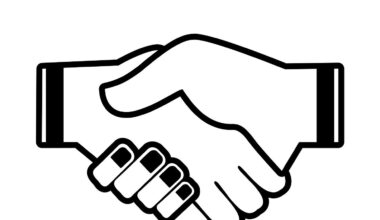Balancing Debt Repayment and Savings Goals
Managing debt while striving to save can feel overwhelming, but finding a balance is essential. Many individuals overspend without realizing the consequences, leading to an endless cycle of debt. First, assess your current debt situation. Identify various debts, such as credit cards, loans, and mortgages. Next, determine your minimum monthly payments. These numbers will become the foundational element in formulating a repayment plan. Once you’ve outlined your debts, take a close look at your income and expenses. Creating a detailed budget can help uncover spending patterns that detract from both debt repayment and savings. Income should primarily cover necessary expenses, but allocate a portion for debt repayment and savings goals. The goal is not to entirely eliminate one for the other but to create a manageable percentage for each. Consider the advantages of building an emergency fund to safeguard against unexpected expenses, thus preventing new debt from accumulating. Strive for a 50/30/20 budgeting rule, allocating 50% for needs, 30% for wants, and 20% for savings and debt repayment. Finding harmony between paying off obligations and saving is crucial for financial stability.
Understanding the Importance of Debt Management
Effective debt management is paramount for long-term financial health. Prioritizing repayment is not just about making minimum payments; you need to eliminate high-interest debt first. Credit cards typically carry exorbitant interest rates, creating a financial strain. Developing a strategic approach can simplify repayment. The snowball method encourages tackling smaller debts first, providing psychological benefits. Conversely, the avalanche method focuses on high-interest debts to save on total interest paid. By managing your debt wisely, you also build a positive credit score that can help secure loans with favorable terms in the future. A good credit score lowers interest rates, making it easier to budget effectively. Always stay on top of bill payments, as late payments can incur fees and higher interest rates. Explore options like debt consolidation or negotiation if you’re struggling. Consolidating debts into a single, lower interest loan can simplify payments and reduce overall costs. Additionally, remember the importance of maintaining open communication with creditors. It proves beneficial during challenging financial times for negotiating better payment terms or even settling debts. Armed with these insights, you can better navigate your debt and savings goals.
As you work to pay off debt, it’s essential to set realistic savings goals. Before diving into what savings methods work best for your situation, evaluate some common financial goals. Short-term savings might include an emergency fund, vacation, or new appliances. Alternatively, long-term goals could consist of retirement savings or purchasing a home. By clearly defining these objectives, you can allocate funds effectively without sacrificing necessary debt repayment. Start with an emergency fund to cover three to six months of living expenses, which can prevent additional debt when unexpected situations arise. Consider using high-yield savings accounts to grow your money while keeping it accessible. Monthly contributions to these savings should align with your goals. Automating savings can simplify the process, directly withdrawing funds from your checking account. You can also utilize cash envelopes, this method can be especially effective for keeping spending in check. As your savings grow, reassess your goals regularly. Life circumstances may change and adjusting plans is essential for success over time. Regularly reviewing your budget keeps you aligned. Ultimately, setting attainable savings goals alongside debt repayment leads to financial resilience.
Communication plays a crucial role in effectively managing debt and savings. If you share financial responsibilities with a partner, ensure that both parties discuss financial goals openly. Setting joint objectives builds teamwork and ensures mutual understanding, thereby reducing the risk of misunderstandings. Discuss purchasing significant items together to form a cohesive plan that addresses savings and debt repayment. Regular financial meetings can foster transparency, where you can openly discuss difficulties or achievements. Consider seeking financial advice from experts if juggling debt and savings proves challenging. Financial advisors can provide assistance through specialized knowledge, identifying strategies tailored to your situation. They can help design debt repayment plans that align with your savings goals as well. As an alternative, some non-profit organizations offer free financial counseling. Remember, sharing finances with a partner requires a commitment to honesty and accountability. Moreover, it’s beneficial to include a flexible approach in your conversations, adapting to changing economic conditions. The key to successful financial management is maintaining an open dialogue and working collaboratively towards both debt repayment and savings goals, ultimately contributing to a more secure financial future.
Using Tools for Effective Financial Management
In today’s digital age, numerous tools and apps can assist with financial management. Utilizing technology assists in budgeting, tracking spending, and achieving debt repayment alongside savings goals. Consider using budgeting apps like Mint or YNAB (You Need A Budget) to take control of your finances. These platforms help you categorize spending, create budgets, and visualize your financial situation clearly. Setting up alerts for bill payments through these apps promotes timely payments. Moreover, automating savings transfers between accounts can help ensure that saving is continuous and consistent. A calendar can also track progress with savings and debt goals, serving as visual reminders to stay on course. Additionally, spreadsheet programs can help customize budgeting templates tailored to specific needs. For those wary of technology, traditional methods such as pen and paper have their merits; many find reviewing goals by hand improves reflection. The most important factor is choosing a system that suits your lifestyle and preferences. Emphasizing ease of use and accessibility ensures you remain committed to managing both payments and savings effectively. By finding the right tools, financial management becomes more manageable.
Maintaining motivation while balancing debt and savings is essential for successful financial management. Celebrating milestones reinforces positive habits. Each time you pay off a piece of debt or reach a savings target, take a moment to acknowledge that achievement. It helps to create a reward system, which can be as simple or elaborate as you desire. Consider treating yourself to a small outing or purchasing something you’ve been saving for without detracting from your budget. Another motivation technique involves visualizing financial goals. Creating a vision board filled with representations of your dreams, such as a home, vacation destinations, or financial security, can continuously inspire you to stay focused. Viewing these goals daily embeds them in your subconscious, prompting action. Furthermore, surrounding yourself with supportive individuals can help immensely. Whether friends, family, or online communities, receiving encouragement while navigating financial challenges fosters resilience. Sharing your goals and progress with committed supporters holds you accountable and encourages positivity. In the end, staying motivated proves critical to your journey of balancing debt repayment with savings goals while fostering financial stability.
Review and Adjust Regularly
Lastly, make it a habit to review and adjust your financial plan regularly. Changes in income, expenses, and life circumstances affect financial situations, necessitating adjustments in budgeting, debt repayment, and savings goals. Evaluating your finances quarterly or bi-annually helps to assess performance objectively. Identify where funds are most successfully allocated towards debt repayment and savings, and where adjustments are necessary. When analyzing your budget, consider looking for new opportunities to reduce expenses. Evaluate subscriptions, memberships, and unnecessary spending. Utilize any freed-up funds for paying down debt or enhancing savings. It’s crucial to remain flexible and responsive to changing situations, such as job changes or unexpected costs. The same vigilance applies when achieving savings goals; any changes must be actively adjusted. If significant life transitions arise, such as marriage or having a baby, take the time to reassess all financial commitments. Continuous evaluation keeps you aware of your financial health, allowing for timely adjustments as needed, ultimately leading to success in managing debt and meeting your savings goals. Embrace the journey towards financial freedom and resilience.


